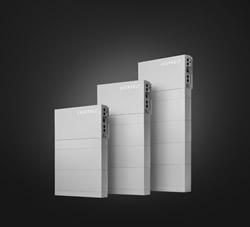Spinwave Systems develops and markets wireless EMS. This includes wireless sensors for temperature, relative humidity and motion (occupancy), wireless utility meter interfaces for electric, gas and water meters and wireless switches to control equipment and lighting loads.
RAINER WISCHINSKI - SPINWAVE SYSTEMS
| Spinwave Systems develops and markets wireless EMS. This includes wireless sensors for temperature, relative humidity and motion (occupancy), wireless utility meter interfaces for electric, gas and water meters and wireless switches to control equipment and lighting loads. |
| EarthToys Interview – Energy Management Systems |
| Rainer Wischinski, Spinwave Systems Inc. |
The content & opinions in this article are the author’s and do not necessarily represent the views of AltEnergyMag
Comments (0)
This post does not have any comments. Be the first to leave a comment below.
Featured Product

EVERVOLT home battery storage: Dependable power, with or without solar
Whether paired with solar or used independently, the renewable energy stored in an EVERVOLT home battery system serves as a reliable backup against unpredictable utility grid fluctuations and weather-related events. Keep essential appliances running longer and maintain your lifestyle during unforeseen circumstances. Our EVERVOLT battery storage systems are backed by a comprehensive 12-year warranty from Panasonic, including coverage for labor. Learn More about Panasonic EVERVOLT.

 The term Energy Management System refers to a computer system which is designed specifically for the automated (energy efficient) control and monitoring of the heating, ventilation, air conditioning and lighting needs of a building or group of buildings such as university campuses, office buildings, retail stores, hotels or manufacturing sites. Energy efficiency is achieved by maintaining proper temperature set points, temperature setbacks during unoccupied periods and demand-based lighting control. Most of these energy management systems also provide facilities for the reading of electricity, gas and water meters. The data obtained from these can then be used to produce trend analysis (pointing out waste due to equipment malfunction or inefficient operation) and annual consumption forecasts.
The term Energy Management System refers to a computer system which is designed specifically for the automated (energy efficient) control and monitoring of the heating, ventilation, air conditioning and lighting needs of a building or group of buildings such as university campuses, office buildings, retail stores, hotels or manufacturing sites. Energy efficiency is achieved by maintaining proper temperature set points, temperature setbacks during unoccupied periods and demand-based lighting control. Most of these energy management systems also provide facilities for the reading of electricity, gas and water meters. The data obtained from these can then be used to produce trend analysis (pointing out waste due to equipment malfunction or inefficient operation) and annual consumption forecasts. 


